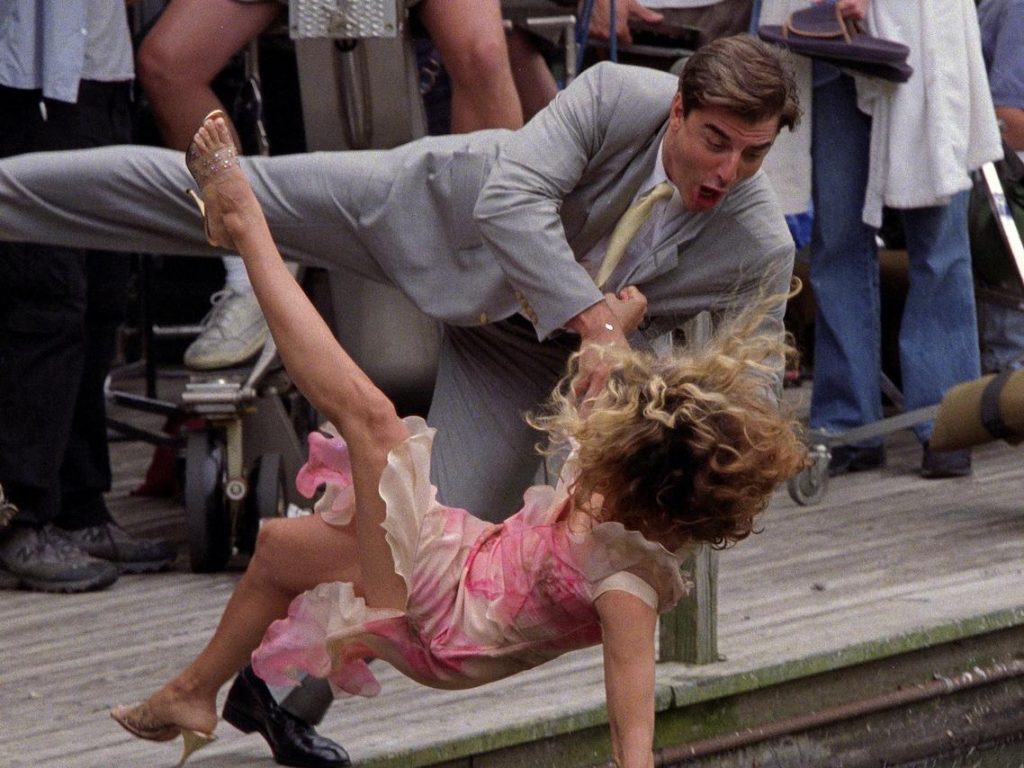So Jenna Ortega wore Carrie Bradshaw’s Dior newspaper dress, what’s the big deal?
Recycled looks on the red carpet, the infiltration of nostalgia-based marketing and fashion’s biggest brands plucking design inspiration from well-loved collections and individuals for the runway—these are just a few examples of contexts in which reference has become the new normal for modern fashion.
Now, despite the current era of fashion becoming increasingly defined by individualism and originality in response to the rise in artificial technology advancements, an oversaturation of the industry and a complete commoditization of the market, these referential nods to cultural touchstones are not seen by audiences as lazy or copied, but rather indicate a sense of authority, knowledge and taste that could only be possessed—satirically speaking, of course—by “in the know” individuals and true fans of the iconicized originals.
So, under these unique conditions and in spite of more logical assumptions based on the harsh critique usually accompanied by designs that are eerily similar to already existing versions and celebrities peacocking on the red carpet in historically significant garments, how did subtle nods to fashion’s past take over as the industry’s go-to?
“References in fashion aren’t a new concept by any means,” said Ari Arvand, a New York-based freelance stylist and costume designer who often posts fashion commentary videos on social media under the username @grrrlbossbabe, in an interview.
“On the one hand, Gen Z values references and will be more impressed with a look knowing its history,” she said. “On the other hand, it’s an easy cop-out for stylists to generate publicity for their work instead of coming up with something new. When a celebrity attaches themselves to a beloved figure or look, it boosts their image through association. By doing so, they’re guaranteed virality and articles praising the reference.”
Arvand continued, attributing the trend within the fashion industry to a larger shift of generational interests in response to stressful environmental factors, saying, “Fashion is a mirror of culture, and the industry’s obsession with references speaks to a larger cultural shift in society. It’s present in all the media we consume and is part of Gen Z’s language and humor. Because of the political state of the world, many are looking back fondly to the past as a form of escapism. It’s easier to focus on that than to accept our current reality.”
However, despite the persistently positive consumer response regarding this phenomenon, the beginnings of an objection was recently articulated by Ayo Ojo, a popular online fashion critique and analyst who posts content on several social media platforms under the username @fashionroadman.
In a post that was shared on both X and Instagram, Ojo asked his audience, in reference to Johnathan Anderson’s highly praised debut collection as the new creative director of Dior—a show which not only pulled from techniques and fabrication originally crafted by the brand’s namesake founder, but from the styling of socially iconic individuals like Jean-Michel Basquiat, among others—“Does referencing the archives automatically make a collection good?”
In an interview with Emily Huggard, professor of fashion communication at Parsons School of Design and author of the book Communicating Fashion Brands: Theoretical and Practical Perspectives, the academic pondered the question and shared her response.
“I would say absolutely not,” she said, explaining how Dior is tapping into older collections with precision, making sure not to overstep. “Brand defenders like Jonathan Anderson… they use references not to recreate, but to recontextualize the current moment. He’s telling the larger story around changing the brand, and through these sort of subtle or non subtle messages.”
Huggard continued, citing references as a strategic way creative direction can be geared towards a multigenerational audience, but warning against the negative implications of relying on them too heavily.
“I think it sort of risks being surface level at some at some point, right?” she said. “It’s like, yes, it’s beautiful, and it’s referencing the past, and it’s taking these classic shapes, but is there anything deeper to it? There has to be some sort of engagement with what’s happening in the world and what people care about as well. It’s not just social capital, but also cultural capital of the moment.”
Similarly, Arvand argues while interesting for audiences, the use of reference often limits space for new narratives. “The problem with today’s references is that they are moreso direct copies instead of a starting point of inspiration. When a reference isn’t thoughtfully executed, it also dilutes the original meaning of the piece.”
Looking critically at this trend, it’s inevitable to wonder just how far, and in what direction—especially in this unprecedented territory—the pendulum will swing as reference becomes a key building block for brands, stylists and marketers to shape narratives and entice consumers.
In a study preformed by Sprout Social, the social media management platform found that 57% of U.S. consumers are more likely to increase their spending when shopping with a brand they feel connected to. This statistic, among other, only incentivizes brands to adhere to reference-based business practices as consumers continue to crave emotional connection from the businesses they support financially.
However, in the wake of the trends rapid growth, individuals like Arvand remain persistently weary. “I do think the hyper-focus on nostalgia and references is hurting the fashion industry creatively,” she said. “Financially, it’s an extremely profitable market, which is why the trend hasn’t died down and won’t any time soon. Regardless, fashion is an important form of storytelling. How can we come up with fresh concepts if we’re constantly borrowing from the past?”

